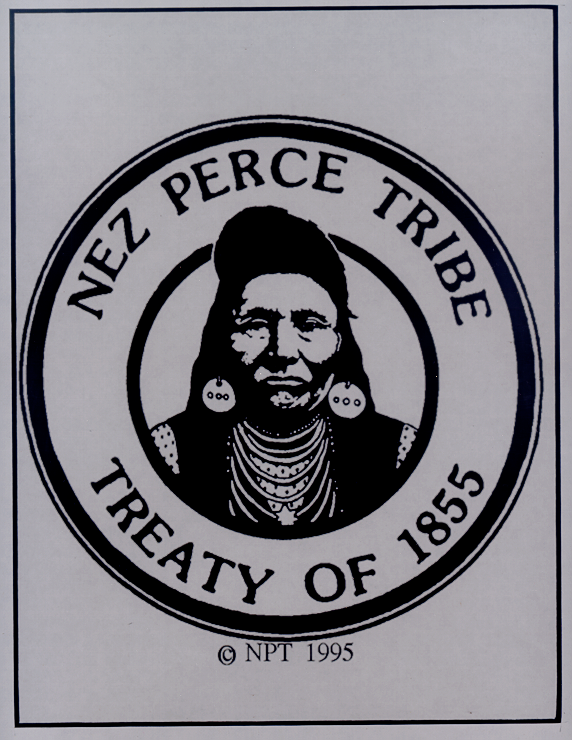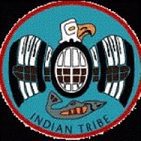Nimiipuu Health has two locations to serve its patients. The Lapwai Clinic is located in Lapwa, Idaho, also know as The Land of the Butterflys, approximately 13 miles from Lewiston in North Central Idaho. The current clinic is a new 43,000 square foot building that opened in 2004. The Lapwai facility offers comprehensive clinical services including medical care, lab and xray services, pharmacy, dental care, physical therapy, optometry, mental health and substance abuse services, and a wide variety of community health services. services not provided on site may be available through contract health services.
The Indian Health Service provided healthcare to the Nez Perce Tribe unstil 1997 when the tribe took over under P.L. 93-638 of the Indian Health Care Improvement Act. The Tribe has since transitioned into a Self-Governance Compact in 2002, which allows the Tribe more autonomy and flexibility. This has enabled the Tribe to reallocate funds to best suit the needs of its population and to access other source of funding such as grants for program expansion and construction. The second ambulatory clinic is located in Kamiah, Idaho approximately 72 miles Southeast of Lapwai. A new 7,000 square foot health facility for the Kamiah area was opened in 2001 and offers medical, dental, behavior health, and community health services on site.
Commodity foods, and elderly care.
Nimiipuu Health provides a full range of outpatient medical services to the patients. These include preventive services, screening and assessment, diagnostic procedures, treatment, and some rehabilitative services. These services are provided through the on-site services of our medical/nursing staff with the support of our:
- Laboratory
- X-ray
- Pharmacy
- Physical therapy
- Ophthalmology
Services from those programs are on the basis of a referral from one of the Nimiipuu Health providers. Tribal health programs include community, Maternal and child health and WIC & nutrition programs, drug and alcohol, child protective services, Community Health Representatives, Commodity foods, and elderly care. Indian Health Services include contract care, dental, health education, laboratory, pharmacy, medical, sanitation, mental health, and housekeeping.

Mission: To treat mental and physical illness using standard of care practices. To be sensitive to our patients’ life situations when to do so might improve their care. To promote wellness behavior and personal responsibility for health maintenance. To document care sufficiently for effective communication between caregivers and auxiliary personnel. To provide such services without compromising the well being of the providers and auxiliary staff themselves.
Historically, the Nez Perce Tribe functioned as a self-governing nation. Later, treaties with the federal government preserved the tribe’s status as a sovereign nation within the United States.
For more information visit: https://www.nezpercecultural.org/
Traditional Ways
Originally, the Nimiipuu people occupied an area that included parts of present-day Idaho, Oregon, and Washington. They moved throughout this region and parts of what are now Montana and Wyoming to fish, hunt, and trade.
The Nez Perce Tribe’s government included a leader for many aspects of their traditional lifeways, such as fishing, hunting, warfare, and religion. Councils guided the decisions of each leader. The Nimiipuu people chose leaders and council members based on their knowledge and skill sets.
Today, many traditional ways remain part of our tribal culture.
Treaties
During the 1855 treaty negotiations at Walla Walla, the Tribe insisted on retaining these inherent rights. Tribal leaders negotiated retention of approximately 7.5 million acres to be protected as the Tribe’s exclusive reservation.
Once gold was discovered, mass trespass and theft took place within the Tribe’s reservation. Instead of protecting the reservation from encroachment, the federal government forced the Tribe into a second treaty in 1863, which reduced the reservation to about 750,000 acres. A third treaty in 1868 primarily dealt with timber trespass issues.
In 1871, the federal government ceased the treaty-making process with Tribes. However, the federal government later imposed the Allotment Act upon the Tribe, sending a surveyor to determine and assign parcels to individual tribal members, then declaring the remaining reservation area open for non-Indian settlement. An 1893 Agreement ultimately reflected this new process. This is why today’s reservation is deemed to be a “checkerboard” reservation, where Indian allotments are intermingled with non-Indian parcels to create a complex jurisdictional landscape.
Throughout the treaty-making process, the Nez Perce Tribe retained the inherent right to fish at usual and accustomed fishing stations, and to hunt, gather and graze livestock on open and unclaimed lands, all outside of the reservation boundary. These off-reservation rights have been upheld on numerous occasions in state court cases, citing treaty rights as the supreme law of the land.
The Coeur d’Alene lands were reduced to approximately 600,000 acres (2,400 km²) in 1873 when U.S. President Ulysses Grant established the Coeur d’Alene Indian Reservation by Executive Order. Successive government acts cut their property to 345,000 acres (1,400 km²) near Plummer, south of the town of Coeur d’Alene.
In 1990, the Health Board Authority and Tribal Council decided its new clinic would serve all persons in the community regardless of their ability to pay. In 1994 BMC was finally able to provide services to the medically underserved and indigent population. Funding from the Bureau of Primary Health Care allowed the Tribe to establish the clinic as a Community Health Center. A sliding fee scale now could be offered to the non-Indians in the local region.
The Benewah Medical Center (renamed Marimn Health), opened in 1990 with 14 staff, it now employs approximately 170 with an annual budget in excess of 16 million. Marimn Health has experienced a consistent growth pattern of both patient registration and service use during the entire history of the organization.
The Nez Perce territory at the time of Lewis and Clark (1804–1806) was approximately 17,000,000 acres (69,000 km2) and covered parts of present-day Washington, Oregon, Montana, and Idaho, in an area surrounding the Snake (Weyikespe), Grande Ronde River, Salmon (Naco’x kuus) (“Chinook salmon Water”) and the Clearwater (Koos-Kai-Kai) (“Clear Water”) rivers. The tribal area extended from the Bitterroots in the east (the door to the Northwestern Plains of Montana) to the Blue Mountains in the west between latitudes 45°N and 47°N.
In 1800, the Nez Perce had more than 70 permanent villages, ranging from 30 to 200 individuals, depending on the season and social grouping. Archeologists have identified a total of about 300 related sites including camps and villages, mostly in the Salmon River Canyon. In 1805, the Nez Perce were the largest tribe on the Columbia River Plateau, with a population of about 6,000. By the beginning of the 20th century, the Nez Perce had declined to about 1,800 due to epidemics, conflicts with non-Indians, and other factors. The tribe reports having more than 3,500 members in 2021.
Like other Plateau tribes, the Nez Perce had seasonal villages and camps to take advantage of natural resources throughout the year. Their migration followed a recurring pattern from permanent winter villages through several temporary camps, nearly always returning to the same locations each year. The Nez Perce traveled via the Lolo Trail (Salish: Naptnišaqs – “Nez Perce Trail”) (Khoo-say-ne-ise-kit) as far east as the Plains (Khoo-sayn / Kuseyn) (“Buffalo country”) of Montana to hunt buffalo (Qoq’a lx) and as far west as the Pacific Coast (’Eteyekuus) (“Big Water”). Before the 1957 construction of The Dalles Dam, which flooded this area, Celilo Falls (Silayloo) was a favored location on the Columbia River (Xuyelp) (“The Great River”) for salmon (lé’wliks)-fishing. The Columbia Basin Initiative aims to improve salmon-fishing for the tribe.
The current tribal lands consist of a reservation in North Central Idaho at 46°18′N 116°24′W, primarily in the Camas Prairie region south of the Clearwater River, in parts of four counties. In descending order of surface area, the counties are Nez Perce, Lewis, Idaho, and Clearwater. The total land area is about 1,195 square miles (3,100 km2), and the reservation’s population at the 2000 census was 17,959.
Due to tribal loss of lands, the population on the reservation is predominantly white, nearly 90% in 1988. The largest community is the city of Orofino, near its northeast corner. Lapwai is the seat of tribal government, and it has the highest percentage of Nez Perce people as residents, at about 81.4 percent.
Similar to the opening of Native American lands in Oklahoma by allowing acquisition of surplus by non-natives after households received plots, the U.S. government opened the Nez Percé reservation for general settlement on November 18, 1895. The proclamation had been signed less than two weeks earlier by President Grover Cleveland.Thousands rushed to grab land on the reservation, staking out their claims even on land owned by Nez Perce families.
The Nez Perce Wallowa Homeland at Wallowa in northeast Oregon is in the historic territory of the large Wallowa Band. The Homeland has owned 320 acres (130 ha) and a visitor center since 2000, to “enrich relationships among the descendants of indigenous people and the contemporary inhabitants of the Wallowa Valley … [and to] preserve and celebrate the customs and culture of the indigenous inhabitants.” A Methodist church was established in Wallowa in 1877, and in 2021 the United Methodist Church returned a small parcel of land and the church building to the Nez Perce Tribe.
For more language visit: http://www.nimipuutimt.org
Language Team Leader:
Thomas Gregory/ tátlo (208) 621-4659 thomasg@nezperce.org
Language Coordinator:
Angel Sobotta (208) 621-4644 angel@nezperce.org
Language Program Technicians:
Gary Greene (208) 621-4759 garyg@nezperce.org
Andrea Sonneck (208) 621-4645 andreas@nezperce.org
Trina Webb (208) 621-4720 trinaw@nezperce.org
Stella Sammaripa (208) 621-4741 Kamiah (208) 621-3587 Teweepu stellap@nezperce.org
_____________________________________________________________________________
Several different alphabets have represented Nimipuutimt. The Advisory Board of Elders decided to use the writing system shown here.
Nimipuutimt never uses capitals, not at the beginning of any sentence or for any words except English personal names. The Nimipuutimt has several sounds that aren’t used in English. Try practicing with the lessons below to say the words correctly.
Vowels
Nimipuutimt has five vowels that can be short or long: a, e, i, o, u or aa, ee, ii, oo, uu.
Whether vowels are short or long, each vowel stands for essentially the same sound, but the sound is more drawn out for the long vowels.
Stress
Each word has one vowel that has the most emphasis. Vowels with stress are pronounced a little stronger and higher than other vowels.
It is important to say words with the stress on the right vowel or the word will sound wrong. For example, try saying potato and tomato with the stress on the first or last vowel. See how funny it sounds? Now, consider the two English words cónvict and convíct. The first one is a noun and the second one is a verb. The only difference between these two words is which vowel has the stress.
We indicate which vowel is emphasized by putting a stress mark over it: á, é, í, ó, ú. For the long vowels, we only put the mark over the first part of the vowel: áa, ée, íi, óo, úu. Normally, we don’t need a stress mark for a word with only one vowel because we know that vowel is emphasized.
Pronunciation
a
To make this sound, open your mouth wide (like when the doctor looks at your throat).
When you say aa, it will be about twice as long as a. The short a sounds like the first two letters in the English word automatic. The long aa sounds like the vowel sounds in hall and lost.
Practice:
| Nimipuutímt word | Meaning |
| Háham | Men |
| Lamáta | Whitebird, Idaho |
| pátan | Bushes, brush |
| háama | Man |
| páaps | Red fir |
| táamsas | Wild rose |
o
This vowel is much like the o vowel in English. However, while the English vowel ō “glides” into a w at the end, the proper Nimipuutimt pronunciation keeps the sound pure.
When you pronounce this vowel, make your lips round. The first vowel sound in potato and the last in Arapaho sound like short o. The oo has the vowel sound heard in tone and load.
Practice:
| Nimipuutímt word | Meaning |
| koná | There |
| póhol | Ravine, side canyon |
| tóhon | Pants, underwear |
| hóopop | Edible pine moss |
| sooyáapoo | Non-Indian |
u
This vowel sound is also round like o, but it is made with the tongue a little higher and the mouth a little tighter. The English words put and look have the short u sound, and the word through has the long uu sound.
Like the o, the Nimipuutímt u is pure. It does not include a w sound at the end, as the English sound does.
Practice:
| Nimipuutímt word | Meaning |
| Húhuy | Shoulder |
| Sílu | Eye |
| Núusnu | Nose |
| Húusus | Head |
| Kuus | Water |
i
This vowel sound is made with the tongue high and close to your teeth and the mouth tight.
Short i can differ a little depending on the word, sounding either like the vowel in tick or the last vowel in crazy. The ii sound is like that in piece and see. When we pronounce long i in English, we have a y sound at the end of it. In Nimipuutimt, the long i should be kept pure.
Practice:
| Nimipuutímt word | Meaning |
| Sis | Bellybutton |
| Tit | Tooth |
| Siis | Gravy, stew |
| Piips | Bones |
| Kii | This |
e
This sound is made with the mouth well open like a, but with the tongue farther forward. This sound is very common in English, although it is usually spelled with the letter a (as in cat).
Like the other short vowels, e can sound a little different depending on the word. With practice, these differences will become natural. The short e sound can sound like the vowel in canon, central, set, and laugh. The long ee pronunciation does not vary as much. It sounds like the vowels in lamb and whack.
Practice:
| Nimipuutímt word | Meaning |
| Héhen | Vine |
| Tílel | Bluff, hill |
| Síwe | Forehead |
| Wéeptes | Golden eagle |
| Keléemet | Pipe |
| Héesu | Eel |
| Wéetes | Earth, Land |
Words and Phrases
Commands
| Nimipuutímt | English Translation |
| wix̣sil’íix | Sit down |
| wix̣sil’íikitx | You all sit down |
| wiséekey’x | Stand up |
| wiséekey’kitx | You all stand up |
| mic’yóox̣om | Listen to me |
| mic’yóox̣omtx | You all listen to me |
| ‘amc’yóox̣oy miyóox̣atna | Listen to the leader |
| ‘amc’yóox̣otx miyóox̣atna | You all listen to the leader |
| ‘amc’yóox̣oy ‘im’íisep | Listen to your mother |
| ‘amc’yóox̣otx ‘im’tóotap | You all listen to your father |
| ‘imóotalx | Be still! |
| ‘imamóotalkitx | Be still! (pl.) |
Hunting
Adding ne/na to the end of a word referring to an animal or an object means you see it.
| Nimipuutímt | English Translation |
| ’e’ewíi | Shooting |
| tim’úuni | Bow (and now, gun) |
| céep | Arrow (and now, bullet) |
| ’ímes,’ime”esne | Deer |
| qoq’áalx̣, qoq’áalx!na | Buffalo |
| múuh, múuhne | Cow |
| waswásno, waswasnóona | Chicken |
| sáaslaqs, sáaslaqsna | Moose |
| ’itúune ’eekíce? | What do you see? |
| ’íin ’eekíce múuhne | I see a cow |
| ’íin ’eekíce poxpok’láana | I see a ball |
| ’imím ‘ee wees ‘oyláaqc céep | You have six bullets |
| ’e’wíi! | Shoot it! |
| ’e’wíi ‘iméesne! | Shoot the deer! |
| ’e’wíis | You have shot it |
| ’úupteyn | You have missed |
Colors
| Nimipuutímt | English Translation |
| yoosyóos | Blue |
| cíicyele | Purple |
| ’ilp’ílp | Red |
| maqsmáqs | Yellow |
| mímqas | Orange |
| x̣éx̣us | Green |
| cimúuxcimux | Black |
| x̣ayx̣ạyx! | White |
Nez Perce Culture
| Nimipuutímt | English Translation |
| táyam | The time of hot, humid weather/time of food preparation |
| waw’ama’ayq’áal | Nacó’x̣ reach the upper tributary streams to spawn |
| timíipn’it’es núunim ‘anoqonmáana | Remembering our ancestors |
| hinmatóoyalahtq’it
’álok’at |
Thunder traveling to higher areas
Ollikut |
| ’elelímyeté’qenin’/ háatyata’qanin’ | Wrapped in the wind |
| Cúuɫim maqsmáqs | Yellow Bull |
| piyóopiyo x̣ayx̣áyx̣ | Whitebird |
| lamtáama | White Bird Band – ‘area with little snow’ |
| piyopyóot’alikt | Bird Alighting |
| himíin maqsmáqs | Yellow Wolf |
Tribal website
Administration Phone 208-843-2253
P.O. Box 305
Lapwai, ID 83540
Clinic website
Nez Perce Tribe
Tribal website
Administration Phone 208-843-2253
P.O. Box 305
Lapwai, ID 83540
nptec@nezperce.org
8 a.m.–4:30 p.m. M–F
Clinic Information
Member Tribes










































